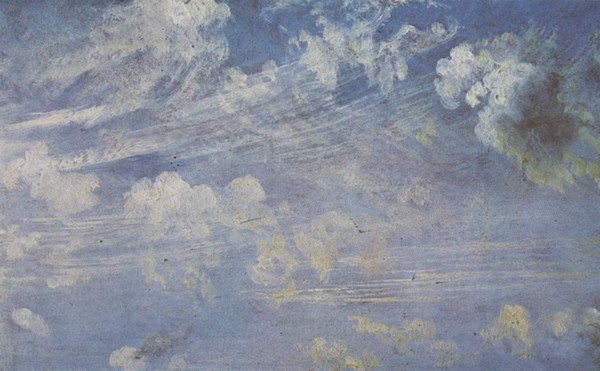All my wishes, my hopes and songs
- Details

It turns out that some time ago, I took on holiday the last recording by Gerald Finley and Julius Drake, Liederkreis Opp 24 & 39, released by Hyperion. In addition to these two great cycles, the CD also includes a minor cycle, Sechs Gedicthe aus dem “Liederbuch eines Malers”, op. 36, with poems by Robert Heinick. Among so many famous and beautiful songs by Heine and Eichendorff, I fell in love with one of the minor songs, Liebesbotschaft. Falling in love literally means listen to it non-stop1, as if it was the only song in the CD or the only CD ever. Eventually my obsession faded and I didn't think of it until I was on that road by the sea because, as you can guess, I had also listened to the song while taking the same route.
Sechs Gedicthe aus dem “Liederbuch eines Malers” is a cycle that is not performed very often; as many others, it is outshined by the beauty of Dichterliebe or the two Liederkreis. I wouldn't say it's among my Schumann's favourite cycles as another less-known cycle, Kerner Lieder, is, but it's worth listening to it and, with regard to the last song, Liebesbotschaft (Message of love), I’ve already told you how much this one struck me.
When you listen to that song, you’ll see that, in my opinion, what makes it so special are those two tunes. We hear the first one at the beginning, joining the two first verses, and then again joining the next two. It lasts four measures and draws a wide and asymmetrical arch, which means that the voice goes up, gets the higher note and goes down up to an even lower note than the initial one. The effect is beautiful and conveys calmness. We hear the second tune straight away, it's the short interlude (just two measures) that we've heard earlier, which is a passionate counterpoint to the first tune. The voice repeats this second tune when singing the fifth verse and the first stanza ends with the repetition of those four measures.
What does Schumann do in the following stanza? He goes back to the first. There's no need to abandon that music, as we are willing to hear it again! So, the second and third stanzas play with the two tunes that are repeated, sure, but not identically. Now higher, now lower, now changing the order, now a different accompaniment... the same music and again, a different one. The messengers who carry the words of love are the clouds, and the rhythm of the song invites us to lay down, place our arms beneath our head at ease and watch them pass. The last, fourth stanza (the poem has five stanzas but Schumann didin’t compose the third) takes us out from that state of calmness for some seconds, when the voice raises. Then, we go back to peace.
Would you like to listen to Liebesbotschaft? Of course, I’m more than happy to share the beautiful version I fell in love with, with Gerald Finley and Julius Drake.
Wolken, die ihr nach Osten eilt,
Wo die eine, die Meine weilt,
All meine Wünsche, mein Hoffen und Singen
Sollen auf eure Flügel sich schwingen,
Sollen euch Flüchtige
Zu ihr lenken,
Daß die Züchtige
Meiner in Treuen mag gedenken!
Singen noch Morgenträume sie ein,
Schwebet leise zum Garten hinein,
Senket als Tau euch in schattige Räume,
Streuet Perlen auf Blumen und Bäume,
Daß der Holdseligen,
Kommt sie gegangen,
Alle die fröhlichen
Blüten sich öffnen mit lichterem Prangen!
Und am Abend, in stiller Ruh'
Breitet der sinkenden Sonne euch zu!
Mögt mit Purpur und Gold euch malen,
Mögt in dem Meere von Gluten und Strahlen
Leicht sich schwingende
Schifflein fahren,
Daß sie singende
Engel glaubet auf euch zu gewahren.
Ja, wohl möchten es Engel sein,
Wäre mein Herz gleich ihrem rein;
All' meine Wünsche, mein Hoffen und Singen
Zieht ja dahin auf euren Schwingen,
Euch, ihr Flüchtigen,
Hinzulenken
Zu der Züchtigen,
Der ich einzig nur mag gedenken!
Clouds that hurry toward the East,
where the one who's mine is waiting,
all my wishes, my hopes and songs
shall fly with you on your wings,
shall steer you, hurrying ones, to her
so that my chaste love
shall think of me with loyal love.
Sing morning dreams to her still,
float gently in the garden,
sink like dew into the shadowy room,
strew pearls upon the flowers and trees
so that to that wonderful being, if she passes by,
all the merry blossoms
shall open with even brighter splendor.
And in the evening, in the silent calm,
spread the sinking sun's light upon her!
It shall paint you purple and gold;
And in the sea, bright with glow and sunbeams,
the little ship plies its way,
so that she believes singing angels
are preserving her.
Yes, it may well be angels,
if my heart were pure like hers;
All my wishes, my hopes and songs
are drawn there on your wings,
are steered there by you, hurrying ones,
to my chaste love,
so that I alone may think of her.
(translation by Emily Ezust)
- 2 Comments












